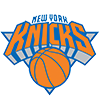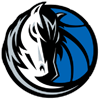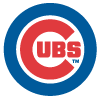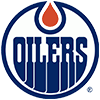The suspense has built long enough. Last week, I promised the final 10 pitchers giving me fits when asked to rank and profile my top 90 starting pitchers. By means of reminder, I'm manually adjusting my projections more than ever this season. The foundation being used to build the 2022 baseline consists of:
- 2019: Happy fun ball
- 2020: 'Nuff said
- 2021: New ball, sticky stuff, weird weather
Factor in weirdness in the minors, and neutralizing skills has even wider error bars than usual. As such, the first bit of massaging involves landing on an acceptable normalized skill set. The next step in projection is to translate skills to expected outcomes and flavoring with team context. This season, I am paying more attention to the final BABIP and LOB% since both should fall within plausible ranges. Last time, I revealed the first five guys giving me agita. Here are the others. My rank accompanies each.
33. Tyler Mahle
Mahle seems like one of those guys the industry ranks high, but when on the clock, they take someone else, citing, "I wanted a bat here", or something like that. Initially, he was ranked much lower. I don't recall exactly, but it was in the 50s or 60s. The reason was a baseline pulling a lot from pre-2020, and the boost is due to there being a tangible explanation why the influence of those seasons can be softened. Here is Mahle's pitch mix over the past few campaigns:
Year | Pitches | 4Seam% | Cutter% | Slider% |
|---|
The suspense has built long enough. Last week, I promised the final 10 pitchers giving me fits when asked to rank and profile my top 90 starting pitchers. By means of reminder, I'm manually adjusting my projections more than ever this season. The foundation being used to build the 2022 baseline consists of:
- 2019: Happy fun ball
- 2020: 'Nuff said
- 2021: New ball, sticky stuff, weird weather
Factor in weirdness in the minors, and neutralizing skills has even wider error bars than usual. As such, the first bit of massaging involves landing on an acceptable normalized skill set. The next step in projection is to translate skills to expected outcomes and flavoring with team context. This season, I am paying more attention to the final BABIP and LOB% since both should fall within plausible ranges. Last time, I revealed the first five guys giving me agita. Here are the others. My rank accompanies each.
33. Tyler Mahle
Mahle seems like one of those guys the industry ranks high, but when on the clock, they take someone else, citing, "I wanted a bat here", or something like that. Initially, he was ranked much lower. I don't recall exactly, but it was in the 50s or 60s. The reason was a baseline pulling a lot from pre-2020, and the boost is due to there being a tangible explanation why the influence of those seasons can be softened. Here is Mahle's pitch mix over the past few campaigns:
Year | Pitches | 4Seam% | Cutter% | Slider% | Curve% | Change% | Split% |
|---|---|---|---|---|---|---|---|
2017 | 369 | 64.4% | 0.0% | 25.3% | 1.9% | 8.4% | 0.0% |
2018 | 2071 | 67.7% | 0.0% | 20.5% | 0.5% | 11.4% | 0.0% |
2019 | 2211 | 57.1% | 7.0% | 0.0% | 23.2% | 0.0% | 12.8% |
2020 | 852 | 54.9% | 0.0% | 32.4% | 0.9% | 0.0% | 11.7% |
2021 | 3196 | 53.1% | 0.0% | 31.1% | 0.0% | 0.0% | 15.8% |
The transformation started in 2019, when Mahle dropped his changeup and introduced a splitter which essentially serves the same purpose. The bigger change occurred in 2020 when Mahle ditched his cutter and curve while reinjecting his slider. He carried that mix over last season, sprinkling in more splitters.
The major repercussion was a big drop in homers. Mahle's strikeouts ticked up, but it's all about the home runs, especially in The Great American Ballpark.
Via Statcast, Mahle's 2021 xHR was 24.3, compared to the actual 24. However, he was unlucky in both 2019 and 2020. My own xHR calculation also pegged Mahle as unlucky.
My little black box regresses according to expected stats, but it doesn't simply replace what happened with what was "supposed" to happen. I set the regression to 50 percent, so it's the average between the two. However, setting it anywhere between 0 and 100 percent is allowable and I'll often tweak either way, depending on how much I feel the player owns the actual number. With Mahle, I decided the regression wasn't capturing enough bad luck, so I adjusted to the point his 2022 projected HR rate is even lower than last season, which is almost unheard of for me. I rarely adjust to that extent. This is why Mahle is included, as it feels weird to have manually adjusted to the extent I did.
36. Jack Flaherty
If I didn't do this for a living, my approach with Flaherty would be simple: I want nothing to do with him. Well, that is my current approach, but as a professional prognosticator (hmm, I like that), I not only need to provide an explanation, but also rank Flaherty.
Here's the explanation. After 2019, Flaherty was thought to be an ace, posting a 2.75 ERA. However, his associated xFIP was 3.64 with a 3.68 SIERA. Of course, there is nothing wrong with an ERA in that range, it's just he was the sixth pitcher off the board in 2020, which assumed an ERA closer to 2.75 than 3.65. Unfortunately, Flaherty's 2020 campaign was a roller coaster of hurry-up-and-slow-down, as the Cardinals were subject to the COVID-19 interruption and Flaherty was handled with kid gloves. The bottom line is his ability to outpitch his peripherals was still unclear.
Even after his uneven 2020, Flaherty was drafted as a top-10 starter last season. Ignoring the injuries for a moment, his 3.22 ERA appears great, but it came with a 3.96 xFIP and 3.92 SIERA.
Of course, the bitter story was oblique and shoulder injuries that limited Flaherty to just 78.1 innings after only 40.1 frames in the pandemic season. In early NFBC ADP, Flaherty now is the 18th starter off the board.
As you can see, I slotted Flaherty at No. 36. I know the wisdom of crowds is usually the better pathway, but I respectfully feel the first 15 drafters are getting it wrong. How many innings will he throw? What is his baseline ERA? I have him at 3.88 with a DH, 3.81 without. I projected 144 innings. Maybe I'm all wet on both. The NFBC ADP had me playing with the numbers (innings and skills) until I finally convinced myself to "trust the system."
48. Justin Verlander
This isn't hard to explain. No one has undergone Tommy John surgery at Verlander's age, recovered and even come close to their previous levels. It's Verlander though, and the dude was throwing 94 to 97 mph BBs at his showcase before re-signing with Houston.
I accelerated his aging curve, accounted for the usual TJS pattern (velocity returns before control and command) and was conservative with his innings and he still came out top 25. Granted, nothing has ever been done until someone does it the first time, but I couldn't give Verlander top-25 status, so I further dampened his aging curve, landing on 127 innings with a 3.76 ERA. I have been called crazy, some feel I am too aggressive, others too conservative. I wonder what Kate thinks.
50. Bailey Ober
Those of us doing this in the public sphere often have players with which we are associated. Ober will no doubt be mine, as I've firmly planted my flag. From a technical perspective, the problem with projecting Ober is it's mostly MLE translation and he has been old for his level, tempering the seemingly impressive skills. He routinely carried a K/9 well into double digits with a BB/9 around 1.00 – that's silly.
I wanted to see what was written in his 2021 site outlook, but he didn't get one. Our minor-league crew is very thorough, and Ober wasn't profiled. That isn't a good sign, regardless of his numbers.
Digging a little deeper, Ober was old for each level because he was injury-riddled in college, undergoing TJS. Even so, our guys would know that, and take it into consideration.
From a scouting perspective, nothing stands out. He features a standard four-pitch mix with a 92 mph fastball.
Usually, players of this ilk are flash in the pans, benefiting from small-sample good fortune.
Maybe this is the case with Ober. But consider this Tweet from RotoWire writer Jeff Zimmerman:
Ten pitchers threw at least 80 IP, had a K/9 over 9.0, and a BB/9 under 2.0. Six of them are:
Kershaw, Scherzer, Wheeler, deGrom, Urias, Burnes
Can you name the other four?
— Jeff Zimmerman (@jeffwzimmerman) November 19, 2021
The answers are Aaron Nola, Chad Green, Nathan Eovaldi and Ober. That's pretty good company. Yes, it's only 92.1 innings, but the skills were too extreme to ignore. Remember, Bill James taught us extremes can be real in small samples.
Even being ultra-conservative, Ober landed at No. 50, fueled by 159 innings of a 3.96 ERA. His Steamer ERA is 4.51. He's currently the 88th-ranked starting pitcher via NFBC ADP. What gives?
I was five-minutes-ago years old when I checked out Ober's ERA and WHIP in the Baseball Forecaster and was pleasantly shocked to see it being nearly identical to mine. This is by no means vindication, but apparently my flag has company.
While I'll hope to grab Ober as my SP5 in a 15-team league (the range for those ranked 61-75), I'll take him as SP4.
54. Ranger Suarez
Like Ober, Suarez put up some ridiculous metrics. However, their backgrounds are different. For one thing, an outlook for Suarez has been written every year since 2019 (insert winkie emoji here).
Suarez came up as a starter, but was converted to a reliever in 2019, enjoying some success. His pandemic season was terrible, so let's fast forward to last season. Suarez began in a low-leverage relief role, earning higher-leverage usage until he became the closer. Soon thereafter, the Phillies acquired Ian Kennedy, so Suarez transitioned back to starting where he put up Jacob deGrom-like numbers.
Simply plugging Suarez's numbers into the little black box generated a projection befitting a solid reliever or a near-elite starter. OK, no problem, studies show a starters skills decline 17 percent when moving from the bullpen. Further, Suarez induced grounders at a 59 percent clip which should have generated a higher-than-average BABIP. It was still a very low .259, so another adjustment was needed, slotting Suarez at No. 54.
On the other hand, Suarez's skills are legit and even though he pitched in relief for a couple years, he maintained a starter-like four-pitch repertoire. I was, and still am, wondering if I would draft Suarez ahead of Ober. My gut says yes. While I don't want to get to hung up on the rankings, they should reflect that. Oh great, now I'm going to haggle whether to tweak things so Suarez moves up or Ober falls a bit.
60. Cal Quantrill
Has Cleveland done it again? They certainly have a knack for getting the most from starting pitchers. Specifically, Indians Guardians starters seem to carry a higher-than-expected strikeout rate.
The baseline translation for Quantrill was straightforward, easily correcting his artificially low ERA the past two seasons. I also accounted for most of his MLB innings coming as a reliever, as just discussed with Suarez.
The problem was Quantrill's strikeout rate. It just felt too low. I trust the system, but the system is designed to capture and account for luck. I'm not smart enough to code for growth outside of regression that moves in a way that helps.
Normally, I would just shrug and move on, but if I'd take Quantrill earlier than the ranking indicated, I needed to dig deeper. With Cleveland's ability to optimize their hurler's pitch mix, I checked out Quantrill's repertoire.
| Year | 4Seam% | 4SSwStrk% | 4SwOBA | 2Seam% | 2SSwStrk% | 2SwOBA | Slider% | SlSwStrk% | SlwOBA | Change% | ChSwStrk% | ChwOBA |
|---|---|---|---|---|---|---|---|---|---|---|---|---|
| 2019 | 20.10% | 9.20% | 0.342 | 36.90% | 7.50% | 0.287 | 21.50% | 17.50% | 0.302 | 17.60% | 14.00% | 0.328 |
| 2020 | 6.00% | 20.00% | 0.410 | 48.00% | 8.70% | 0.251 | 35.30% | 12.40% | 0.345 | 10.70% | 13.00% | 0.293 |
| 2021 | 14.50% | 8.30% | 0.410 | 36.60% | 8.90% | 0.299 | 30.80% | 13.80% | 0.255 | 13.80% | 10.60% | 0.274 |
Quantrill's two- and four-seam fastballs are his least effective pitches, but he throws them half of the time. It's never this easy, but on paper, incorporating more sliders and changeups should bump whiffs. For the record, he mixed in a few curves not reflected in the table.
It's a leap of faith, but I finally worked up the nerve to override the formulas and trust that Quantrill will set a new personal-best strikeout rate this season.
63. Carlos Rodon
Rodon is a perfect example of practicality, logic and theory coming together. In this case, the theory is projection theory and how it untangles his "all over the place" numbers over the past few seasons. Logic fine-tunes the numbers, since injuries contributed to the statistical mess. Practicality is the fun part.
If you think Rodon is healthy, his innings projection will not only be high, but his numbers should be closer to 2021 since that was the only season in which he's been (mostly) healthy. If you're worried about his health, especially since Rodon wasn't extended a qualifying offer, his projection should reflect lower skills than exhibited last season. Sure, there's a chance he was fine until he got hurt in one outing, so his skills weren't affected. I just feel there's a better chance Rodon throws several innings at less than 100 percent, or jumps on and off the IL, negatively influencing his numbers.
Projecting Rodon is a matter of having his skills logically mesh with his innings. I had a hard time discerning the right combination, and in fact changed it again as I was putting this blurb together. Full disclosure, my current rank for Rodon is a bit more optimistic. I was at 110 innings with a 3.91 ERA, I'm now around 140 with a 3.60 ERA. Best I move on, lest I change my mind again.
64. Tarik Skubal
Ah yes, the star of the 2021 First Pitch Arizona symposium. There is always one pitcher who comes out of the conference with extreme helium.
The reasons are clear. Skubal has a live arm and can miss bats. But geez, those homers. In 2020, Skubal allowed nine in only 32 frames (2.53 HR/9). Last season, he served up 35 long balls in 149.1 stanzas (2.11 HR/9). YIKES!
When you surrender that many homers, you must be unlucky, right? Well, Statcast pegged Skubal for 38.6 homers last season and 9.1 in 2020. According to their metrics, he was actually LUCKY!
I mean, he must get better, right? Skubal is a flyball pitcher, so he'll organically carry a high home run rate, but he should pair that with a low BABIP, plus working high in the zone helps punchouts. Even so, inducing more groundballs wouldn't be the worst thing.
The main culprit is a 20.5% HR/FB mark last season, on top of a 20 percent mark the prior campaign. According to Fangraphs, the league average in 2021 was 13.6 percent. Pitchers can be above or below, but 20 percent is dangerous territory. Is it fixable?
Year | 4Seam% | 4s HR% | 2Seam% | 2S HR% | Slider% | SL HR% | Curve% | CV HR% | Change% | CH HR% |
|---|---|---|---|---|---|---|---|---|---|---|
2020 | 58.9% | 8.2% |
|
| 15.7% | 3.2% | 7.8% | 0.0% | 16.4% | 7.4% |
2021 | 42.8% | 7.8% | 12.9% | 4.8% | 22.8% | 2.6% | 6.8% | 4.0% | 12.1% | 1.9% |
Again, with the caveat it always doesn't work out as expected, fewer four-seam fastballs should lower homers.
Deciding on the best landing point is subjective. I looked at some of the other pitchers with similar HR rates and they almost all fell the following season, but then again, they had to, no?
I dropped Skubal to a 1.46 HR/9. It's clearly still high, but it's a huge decline from last season.
Skubal is an early candidate for, "He's so underrated, he's overrated." The narrative will be his upside is huge, so it's worth speculating in case something clicks. Everyone chases the upside to the point you're paying for it, mitigating profit.
69. Joe Ryan
Ryan is a lot like his teammate Ober in that his minor-league numbers were off the charts, but he comes with more prospect pedigree. After handling his MLEs in much the same way as Ober, his numbers were too optimistic.
Ryan has always been a flyball pitcher, but in the minors his home run rate didn't always reflect it. Other than translating his goofy strikeout and walk MLEs, the key with Ryan is deciding how many homers he'll yield in the majors. Keep in mind, Target Field stealthily suppresses power. Even so, Ryan is a flyball guy. After some waffling, I settled on a 1.39 HR/9 and 4.11 ERA. The thing is, I can legit argue for an ERA half a run higher or lower. I guess that makes this "right", in the middle of a huge range of plausible outcomes.
84. Wade Miley
According to all his estimators, Miley's 3.37 ERA was lucky. One of the driving forces was an ability to induce weak contact. This is one of those, "He does it until he doesn't" things. To reiterate what I wrote last week, that's a cute way of saying, "Until his luck runs out."
After tweeting something to this effect, many pointed me toward some pieces discussing Miley's introduction of a cutter, and how that allowed him to outpitch his peripherals, suggesting his ERA correction won't be too harsh.
I was aware of the cutter, and it certainly helped Miley, I'm just not sure it face-palmed Lady Luck. Regression doesn't punch a time clock, and I felt Miley was due a heavy dose.
On the other hand, I'm not naïve; I recognize expected metrics are being refined, and the possibility exists something Miley did isn't being properly captured.
I landed on a 3.98 ERA, but since strikeouts are so integral to fantasy, his ranking is lower than most with a sub-4.00 ERA.
Perhaps unduly, I felt it necessary to include Miley in this top 90 since there was a points league lean. Although Miley doesn't rack up strikeouts, he compiles innings which is a huge boon in the format. Evoking the "Would you draft him there?" test, my answer is no, regardless of format. While I'm good with including him, now that my focus is on 5x5, I'm pushing his ERA closer to 4.50.
Note to points leaguers: based on the buzz at First Pitch Arizona, points formats, especially via Best Ball, is gaining traction so don't worry, you'll get your fair share of attention, at least from me.



































